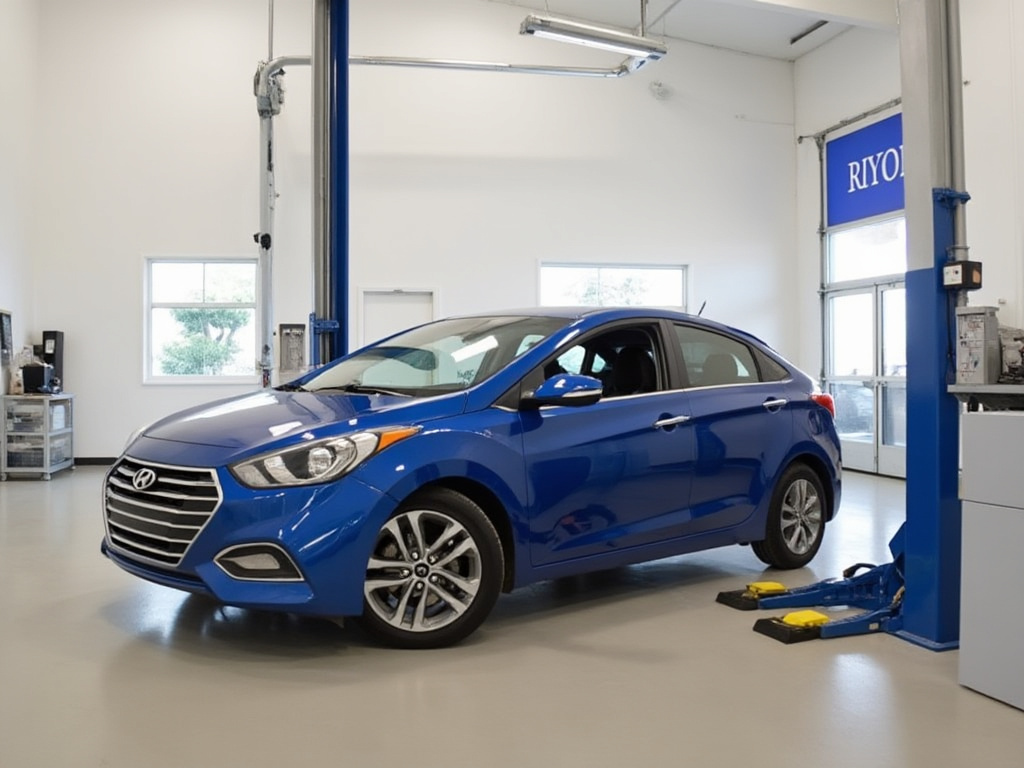Hyundai and Innovation: Which Technologies Make Hyundai a Smart Choice?
Hyundai’s Electric Revolution: Powering into the Future
Ioniq Series: A Benchmark for the Future
Hyundai is not merely participating in the electric vehicle (EV) race; they’re setting the pace. From my perspective, Hyundai’s electric revolution is a bold stride into sustainable mobility. The Ioniq series, with models like the Ioniq 5 and 6, aren’t just vehicles; they’re statements. These cars have earned accolades such as the World Car of the Year, showcasing their design innovation and delivering a real-world electric driving experience that balances exhilaration with eco-friendliness.
Strategic Expansion by 2030
What particularly stands out is Hyundai’s ambitious plan to significantly expand their electric lineup by 2030, aiming for a notable share of the global market. This strategy isn’t just about increasing numbers; it’s about creating a diverse range of EVs that cater to different consumer preferences, from urban runabouts to luxury vehicles under the Genesis brand. This diversification reflects a deep understanding of market dynamics and consumer needs.
E-GMP: More Than Just a Platform
The Electric Global Modular Platform (E-GMP) is central to Hyundai’s electric vision. It’s designed not solely for EVs but as a foundational technology that enables a broader ecosystem, with capabilities like bi-directional charging. This platform goes beyond manufacturing cars; it’s about making electric mobility accessible, efficient, and seamlessly integrated into our daily lives.
Hydrogen as a Dual Strategy
Hyundai’s venture into hydrogen fuel cells, with vehicles like the NEXO, demonstrates a nuanced approach to alternative energy. Most automakers focus on battery electric vehicles. Hyundai, however, also pursues hydrogen, addressing battery lifecycle and ethical material sourcing concerns.
Conclusion: Leading the Charge
In my opinion, Hyundai’s electric strategy is a comprehensive blueprint for the automotive industry’s future. It anticipates technological evolution, environmental imperatives, and shifts in consumer trends towards sustainability. If Hyundai meets its 2030 targets, we could look back on this period as the defining moment for electric mobility. This surge would be largely driven by Hyundai’s innovative approach.
Autonomous Driving: Hyundai’s Journey from Idea to Reality
From Vision to Validation
In my years of following automotive tech, I’ve seen few companies tackle autonomous driving with the same conviction as Hyundai. Their journey isn’t just about tech for tech’s sake; it’s a strategic evolution from concept to a reality that promises to redefine our commutes. Hyundai’s collaboration with Motional has been pivotal, not just for integrating technology but for ensuring that it’s ready for the real world. I’ve been particularly impressed by their focus on earning public trust through transparent testing, like the Ioniq 5 robotaxi’s “driver’s license” stunt, which was as much about showcasing capabilities as it was about demystifying autonomous tech for the average consumer.
Comparative Edge
Hyundai’s approach to autonomous driving technology stands out when you compare it to others:
|
Feature
|
Hyundai (with Motional)
|
Competitor A
|
Competitor B
|
|---|---|---|---|
|
Partnership
|
Joint venture with Aptiv
|
In-house
|
Tech Giant X
|
|
Autonomy Level
|
SAE Level 4
|
SAE Level 3
|
SAE Level 4
|
|
Public Trials
|
Yes (Las Vegas)
|
Limited
|
No
|
|
Design Philosophy
|
User comfort and accessibility
|
Varies
|
Performance focus
|
Hyundai’s emphasis on user experience is what, in my opinion, sets them apart. They’re not just aiming for cars that drive themselves; they’re crafting an autonomous experience that feels human-centric, safe, and inclusive. Their vehicles are designed with accommodations for passengers with mobility challenges, showcasing that autonomous tech can be about more than just luxury or convenience.
The Road Ahead
Hyundai’s roadmap for autonomous driving is ambitious but grounded in practicality. They’re not just dreaming of a future where cars drive themselves; they’re building it, step by step, with a clear focus on integration into existing urban ecosystems. Their work with Motional isn’t just about autonomous vehicles; it’s about creating a mobility service that could potentially reshape urban transport. Unlike some competitors who seem focused on the tech’s prowess, Hyundai appears committed to making sure that when these cars hit the road, they’re ready for the complexities of real-world driving, from cityscapes to suburban sprawls.
In my view, Hyundai’s journey in autonomous driving is as much about building trust and practicality as it is about the technology itself. They’re not just making cars; they’re paving the way for a future where mobility is redefined, making autonomous driving not just a possibility but a smart, accessible choice for everyone.
Hyundai in the IoT Landscape: Connected Cars and Beyond
Smart Integration
Hyundai isn’t just making cars; they’re creating intelligent nodes in the Internet of Things (IoT) ecosystem. Through partnerships like the one with Samsung, Hyundai vehicles are now part of the SmartThings network, allowing drivers to interact with their homes directly from their cars. Imagine starting your coffee machine or checking if you locked your front door, all from the driver’s seat. Hyundai’s vision goes beyond mere connectivity, aiming for a seamless blend of automotive and home automation.
Vehicle-to-Everything (V2X)
Hyundai is pushing the boundaries with V2X technology, where vehicles communicate not only with each other but with the surrounding infrastructure. This leap in connectivity can enhance safety, optimize traffic flow, and even support energy management through V2H and V2G capabilities. Here’s how Hyundai’s V2X vision compares:
|
V2X Feature
|
Hyundai
|
Competitor A
|
Competitor B
|
|---|---|---|---|
|
V2H (Home)
|
Yes
|
Limited
|
No
|
|
V2G (Grid)
|
In progress
|
No
|
Concept
|
|
V2V (Vehicle)
|
Yes
|
Yes
|
Yes
|
|
V2I (Infrastructure)
|
Yes
|
Limited
|
Yes
|
Innovative User Experience
With technologies like holographic heads-up displays in collaboration with ZEISS, Hyundai is redefining the driver’s interaction with the vehicle’s environment. This isn’t just about seeing information; it’s about experiencing it in a way that keeps your eyes on the road.
Enhanced Safety and Maintenance
Hyundai’s IoT ecosystem also contributes to proactive safety and maintenance. Vehicles can send real-time data to service centers, predicting issues before they turn into problems. This proactive approach can save time and money, ensuring vehicles are safer and more reliable.
|
Feature
|
Hyundai IoT Benefits
|
|---|---|
|
Predictive Maintenance
|
Alerts drivers and service centers about potential issues
|
|
Real-Time Updates
|
Immediate notifications about road conditions or recalls
|
|
Theft Prevention
|
SmartThings Find can locate lost or stolen vehicles
|
Hyundai’s commitment to IoT showcases a future where cars are not isolated entities but integral parts of a smart, connected world, enhancing every aspect of ownership from convenience to safety, making Hyundai a smart choice for the tech-savvy consumer.
Futuristic Concepts: Hyundai’s Vision for Future Mobility
Hydrogen Beyond Cars
Imagine a future where the roads are not just for cars, where vehicles are not just vehicles but part of a vast, interconnected web of mobility. Hyundai isn’t just adapting to this future; they’re shaping it with a vision that transcends the conventional automotive landscape. Their foresight into hydrogen technology isn’t just about providing an alternative to traditional fuel; it’s about creating a sustainable ecosystem. With Hyundai, hydrogen isn’t merely powering cars; it’s envisioned to power communities, turning waste into energy sources, effectively redefining urban energy infrastructure. This ambitious approach places Hyundai at the forefront of an emerging hydrogen economy.
Software-Defined Evolution
Hyundai’s commitment to software-defined vehicles (SDVs) further illustrates their innovative mindset. In this future, your car doesn’t stay the same; it evolves with software updates, adapting to new technologies, safety features, and personal preferences. This vision isn’t just about keeping up with tech trends; it’s about leading them, ensuring that vehicles can grow and adapt throughout their lifecycle. This shift towards SDVs is a bold statement on the future of automotive manufacturing and ownership.
Skyward Ambitions
When we talk about mobility, Hyundai’s vision includes the skies. Through their subsidiary Supernal, they’re not just dreaming of air taxis; they’re actively developing them. The Urban Air Mobility concept isn’t a distant fantasy for Hyundai but a plan with concrete steps towards operational models by 2028. This initiative aims to revolutionize urban transport, offering a third dimension to commuting that promises to alleviate the ground-based congestion.
Robots on the Road and Beyond
Robotics, through the acquisition of Boston Dynamics, is another frontier Hyundai is exploring. It’s not just about industrial applications anymore; it’s about personal mobility solutions, logistics, and even urban planning. Hyundai’s ‘Metamobility’ concept suggests a world where physical and virtual mobility merge, allowing for seamless interaction between humans, robots, and vehicles.
Designing for the Future
The aesthetic and experiential aspect of Hyundai’s future vehicles also breaks from tradition. Their concept cars, with their fluid, nature-inspired designs and advanced technological interfaces like parametric hidden LED lights, suggest a future where the journey is as significant as the destination. These vehicles aren’t just modes of transport; they’re mobile spaces designed to enhance life on the move, integrating with our digital lives through IoT connectivity that goes beyond the car, interacting with homes, offices, and cities.
Comparative Insights
To illustrate how Hyundai’s vision compares to broader industry trends, consider this:
Hyundai’s hydrogen vision is pioneering, while others are still largely focused on battery-electric vehicles. Their SDV strategy positions them as leaders in a market where most are still catching up with OTA updates. In robotics and UAM, Hyundai is actively shaping the future, whereas many are still in conceptual stages. Their design philosophy and IoT integration are setting new standards, making vehicles not just transportation but nodes in a connected lifestyle network.
Hyundai’s journey into the future of mobility is comprehensive, innovative, and deeply integrated with the broader technological and sustainability trends. They’re not just preparing for what’s next; they’re actively defining it, ensuring that when we think of smart mobility choices, Hyundai is at the forefront of our minds.


